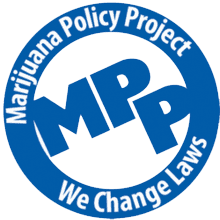Condition Report: IBS
September 1, 2019OVERVIEW
Cannabis’ current regulation in the United States, as well as around the world, limits the vast research needed to educate the public about its advantages. These findings sought to provide medical evidence of cannabis’ benefits and risks in cancer, respiratory disease, immunity, therapeutics effects, psychosocial, mental health, substance abuse, and others to the audience throughout 2018. Even though the evidence for cannabis usage is still elusive, the World Health Organization has urged for nations to remove cannabis from Schedule IV from its list of drug scheduling, which in turn will allow the protection for researchers and advocates interested in conducting additional studies to understand its benefits.
PREFACE
The consumption of cannabis and cannabinoids for medical purposes, as well as for recreational use, is still considered a controversial topic in the time of writing since limited research has not been able to provide a complete scope of results from studies to form any conclusive results about the benefits or risks of cannabis use.
Cannabis’ current regulation under Schedule I, from drug scheduling in the United States, limits the vast research needed to educate the public about its advantages. Needless to say, 34% of Americans support cannabis and its derived products to remain illegal, thus preventing further development and legalization (Hartig & Geiger, 2018).
In 2017, The National Academies of Sciences Engineering Medicine (NAS) published a lengthy report with evidence from several examinations conducted from 2011 through 2017. These findings sought to provide medical evidence of cannabis’ benefits and risks in cancer, respiratory disease, immunity, therapeutics effects, psychosocial, mental health, substance abuse, and others. However, due to the mentioned limitations, the National Academies’ report (2017) concluded that cannabis’ effects are still vague and recommend further investigation to provide more conclusive evidence.
This work of literature ought to be considered a complementary piece – extending the report’s findings – and provide the reader with an unbiased, comprehensive body of evidence regarding results from research and case studies throughout 2018, and the implications of much-needed analysis to benefit the consumer.
Even though the evidence for cannabis usage is still elusive, the World Health Organization has urged for nations to remove cannabis from Schedule IV from their list of drug scheduling, which in turn will allow the protection for researchers and advocates interested in conducting additional studies to understand its advantages (Angell, 2019).
Canneconomy.com and its affiliates aim to provide general information about cannabis consumption in the hopes for policymakers, users, researchers, and the general public to make an informed decision about cannabis and its derived products. Thus, seeking the research needed for a better understanding of marijuana as it takes on the medical field.
BACKGROUND
The cannabis policy landscape has undergone substantial changes over the past 40 years, including the legalization of cannabis for medical use in 28 states in the United States (NASEM, 2017). These policy changes have significantly changed patterns of cannabis use and perceived levels of risk.
Despite extensive interventions at the state level and the rapid increase in cannabis use for both medical and recreational purposes, conclusive evidence remains elusive about the short-and long-term health effects of cannabis use. Limited scientific research has resulted in a lack of understanding in cannabis use’s health implications, which is a significant public health concern. Thus, there is not an official guide to instruct consumers on the dosage and time of administration to use cannabis safely and effectively when treating medical conditions.
The Institute of Medicine (IMO) has published several consensuses reports on cannabis health effects and transformed the industry significantly with its published report titled Marijuana and Medicine: Assessing the Science Base in 1999. Since its publication, the scientific literature on cannabis use has grown substantially and led the National Academies of Sciences, Engineering, and Medicine to publish a lengthy report in 2017 with evidence from several examinations conducted from 2011 through 2017. These findings sought to provide medical evidence of cannabis’ benefits and risks in cancer, respiratory disease, immunity, therapeutics effects, psychosocial, mental health, substance abuse, and others. The report concluded that cannabis’ effects are still vague and recommend further investigation to provide more definitive evidence.
Simultaneously, marihuana is cataloged under Schedule IV of the Drug Convection Treaty of 1961 from the World Health Organization (WHO). However, recent discoveries presented to the WHO’s committee did not indicate that cannabis plant and cannabis resin were particularly liable to produce ill effects similar to other substances in Schedule IV. The Committee also recognized that cannabis preparations such as in the forms of oils and infused foods are chemically formulated in a way that they are not likely to be abused and there is no evidence of actual abuse to justify the current level of control associated with Schedule I in the United States. The organization concluded that the inclusion of cannabis and cannabis resin in Schedule IV is not consistent with the criteria for a drug to be placed in Schedule IV. Thus, the WHO has urged for cannabis and its key components to be rescheduled under international drug treaties. WHO’s petition aims for whole-plant marijuana, as well as cannabis resin, to be removed from the treaty’s Schedule IV (Adhanom, 2018).
If the proposal were to be adopted by nations’ members, it would confirm the belief that the world’s governing bodies have been wrong about cannabis’s risks and therapeutic benefits for years. More importantly, the international agreement would protect future research in the medical field and attempt to eradicate issues such as the opioid crisis, and others.
During this pivotal time, the author of this work embarked to research extensively for credible databases including PubMed, Science Direct, Elsevier, JSTOR, and others to conduct a systematic review of the findings throughout 2018 that expand the National Academies’ report since 2017 and provide the audience with facts of current medical evidence to outline the benefits and risks of cannabis use.
THERAPEUTIC FINDINGS: IRRITABLE BOWEL SYNDROME
Many herbal and plant-based remedies have historically been used for the treatment of gastrointestinal disorders, including Irritable Bowel Syndrome (IBS) (Cyr et al., 2018). Among those treatments, there are those derived from the cannabis plant. Tetrahydrocannabinol (THC), the principal psychoactive molecule of cannabis, was the active compound behind entry-long infections and inflammatory applications (Cyr et al., 2018). The psychological effects of THC in the nervous system have prompted further research on cannabinoid compounds such as cannabidiol (CBD), tetrahydrocannabivarin, cannabidivarin, and cannabichromene.
In a systematic review published by Salaga et al. (2018), questionnaires revealed different results on the use of cannabis to alleviate IBD symptoms. It is was shown to be an essential option for patients, though concerns were raised about its long-term effects on patients. Unfortunately, placebo-controlled trials of IBD patients have been scarce, although Salaga et al. discusses that “up to 45 percent of clinical improvement following treatment with THC”. Other cannabinoid substances had no beneficial effect in a randomized placebo-controlled trial of 20 IBS patients treated with CBD for 8 weeks (Pimentel, 2018).
During 12 weeks (1-week baseline, 10-week therapy period,1-week follow-up), Irving et al. (2018) conducted a multicenter, randomized, double-blind, placebo-controlled, parallel-group research to evaluate CBD-rich botanical extract’s efficacy and safety composed of mild to moderate IBS patients that were refractory to 5-ASA. It was carried out in 9 centers in the UK. In this exploratory research, 41 percent of patients were considered not to be exposed sufficiently to cannabis to see potential therapeutic benefits (Irving et al., 2018).
However, Naftali, Schlieder, Benjaminov, Lish, and Konikoff’s trial patients (2018) were assigned to receive two cannabis or placebo cigarettes daily. Each cigarette had 0.5 g cannabis, equivalent to 11.5 mg of THC. Before and after eight weeks of therapy, endoscopic results and laboratory tests were evaluated. All other patients’ mediations (antidiuretics, antidepressants, etc.) were unchanged. Naftali et al. showed laboratory results of decreased Disease Activity Index (DAI) and increase Calcitonin gene-related peptide (CGRP) from THC and placebo group respectively, however, the THC group showed higher percentages of decreased values. There were no adverse effects, and it is concluded that Tetrahydrocannabinol-rich cannabis is safe and can induce clinical, as well as endoscopic improvement in moderately IBM patients (Naftali et al., 2018).







